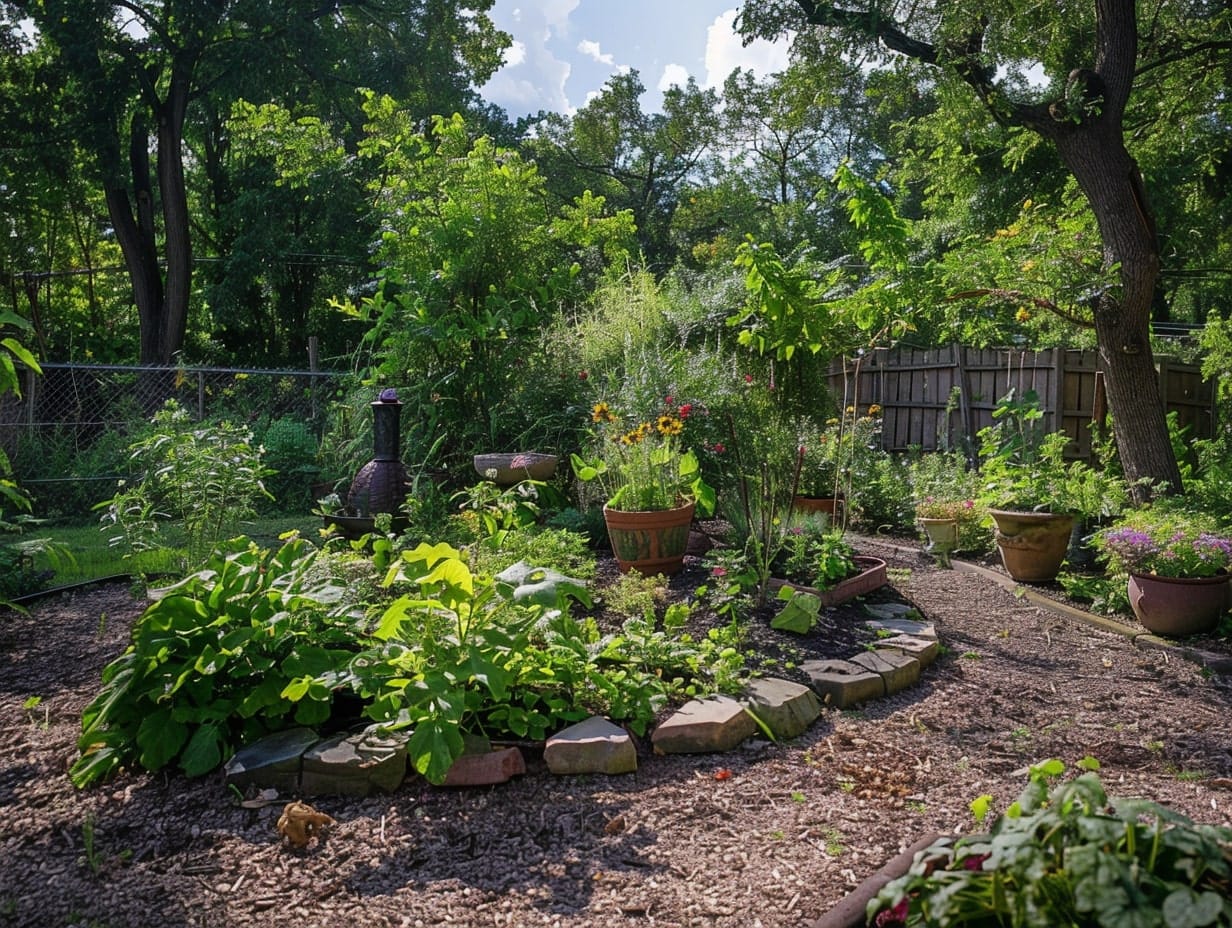When you buy products via links on our website, we might receive an affiliate commission. Learn more
How to Grow a Garden That Keeps Producing

Imagine a garden that produces fresh, organic food year-round, bursting with vibrant colors and buzzing with life!
This is not a fantasy; it's the reality of food forests, a sustainable and bountiful approach to gardening inspired by nature's own abundance.
In this blog post, we'll delve into the secrets of thriving food forests, exploring their techniques and revealing how you can create your own edible paradise.
Learning from Nature: The Seven Layers of Abundance

One of the key principles in creating a food forest is mimicking nature's patterns. By drawing inspiration from the seven layers of a natural forest, you can replicate this system with food-producing plants.
The seven layers include:
- Canopy Layer: Features tall fruit trees like cherries and hazelnuts.
- Sub-Canopy Layer: Consists of shorter trees and shrubs such as apple trees and blueberry bushes.
- Herbaceous Layer: Includes perennial and annual herbs and greens like lettuce.
- Climbing Layer: Vertical growers like grapevines.
- Ground Cover Layer: Plants like strawberries that spread horizontally.
- Root Layer: Includes root vegetables like carrots and beets.
- Aquatic Layer: Incorporates water plants if you have a pond or water feature.
Diversity and Density: Maximizing Production

A diverse garden ensures a continuous harvest. By planting a variety of plants that ripen at different times, you can enjoy fresh produce throughout the year.
Additionally, dense planting methods, such as intercropping and companion planting, maximize yield even in small spaces.
These techniques allow different plants to benefit from each other's presence, creating a synergistic growing environment.
Embracing Microclimates: Nature's Design

Food forests take advantage of microclimates created by taller trees and plants. These shaded areas provide ideal growing conditions for shade-loving plants like strawberries and certain vegetables.
By embracing these natural microclimates, you can cultivate a more diverse and resilient garden. Additionally, allowing fallen leaves and branches to decompose enriches the soil, creating a self-sustaining ecosystem.
Overcoming Doubts and Embracing Experimentation
Many people doubt the effectiveness of food forests, but experimentation and learning from nature are crucial.
Mistakes are valuable lessons that lead to a deeper understanding of the natural world and the best practices for your specific environment. Embrace trial and error, and don’t be discouraged by initial setbacks.
A Paradise for People and Wildlife
A food forest is not only a source of bountiful food but also a haven for wildlife and a place of immense beauty. The vibrant colors, diverse textures, and sweet scents create a truly magical environment.
The passion for food forests is contagious, inspiring gardeners to embrace sustainable practices and create their own edible havens.
Are you ready to start your own food forest journey? Get inspired by nature’s design and begin planning your own edible paradise. Observe, learn, and experiment.
With dedication and a love for the natural world, you can create a food forest that provides sustenance, beauty, and a connection to the earth's bounty.
